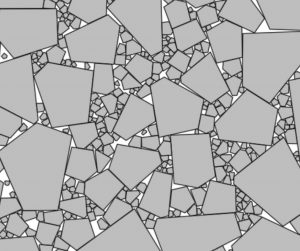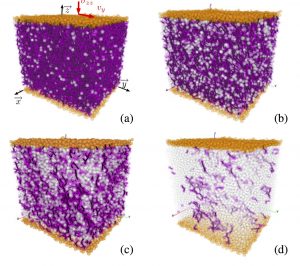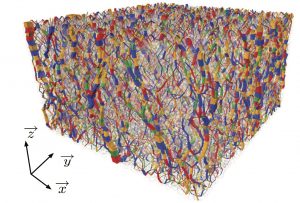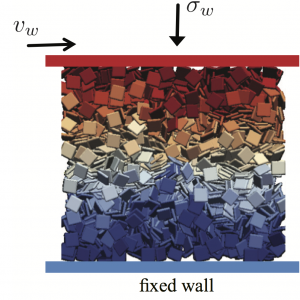David Cantor, Nicolas Estrada, Emilien Azéma, Computers and Geotechnics 67 (2015) 150–156
This article presents a model of grain fragmentation to be implemented in discrete element methods: the Split-Cell Method (SCM). In this method, the particles are of polygonal shape, and they split into polygo- nal cells once a certain failure criterion, depending on the forces exerted at the contacts, the size and shape of the grain, and the tensile strength of the material, is satisfied. The SCM is an improvement compared to other methods currently available in the literature, given that it does not restrict the shape of the grains or their fragments, mass is conserved throughout the fragmentation events, and it does not introduce artificial length scales in the system. In order to validate the proposed method, an experiment using plaster particles was conducted and its results were compared to those of a numerical simulation of the same system, finding a good match between both the experiment and the simulation.






